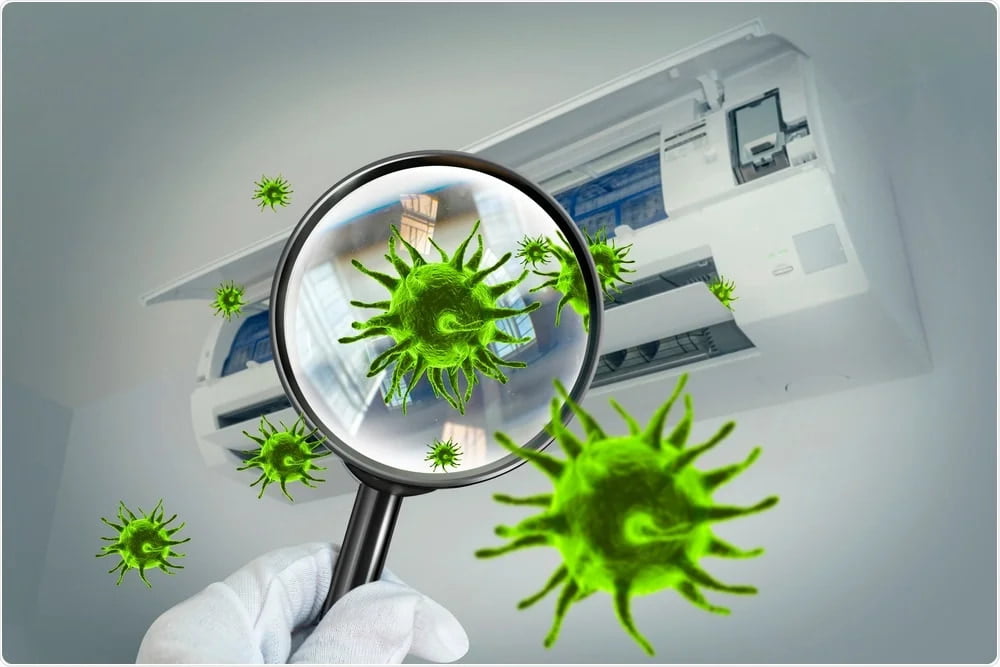
Image Credit: bombermoon / Shutterstock.com
Why is the continued spread of SARS-CoV-2 during warm (and hot) months surprising scientists, public health experts, epidemiologists, and healthcare professionals?
Because unlike influenza, which eases in warmer months, SARS-CoV-2 remains active. Why?
Because, in part, air conditioning alters indoor humidity, creating ideal conditions for the virus.
This article explains the science behind this hot-weather spread and offers a science-driven process to reduce it, the New Wello Protocol from Wello AI.
Let’s start with the problem and close with the solution.
Virus Behavior and Air Moisture
Influenza vs. SARS-CoV-2
Influenza struggles in high moisture, denaturing above 10 grams of water per cubic meter or dew points over 69°F. This is why flu season peaks in winter and falls during the summer months and summer-like temperatures anytime. In contrast, SARS-CoV-2 thrives at higher moisture levels, around 18 grams per cubic meter or dew points above 69.1°F. This allows it to spread even in hot, humid conditions.
Impact of Air Conditioning
Air conditioning cools indoor spaces but also reduces humidity. This lower indoor moisture creates an environment where SARS-CoV-2 can spread more quickly, explaining why the virus peaks during hot days, as Wello AI's data show.
How Wello AI Prevents Virus Spread
Advanced Screening Technology
Wello AI’s technology includes non-contact temperature measurements and possibly other diagnostic tools, identifying likely SARS-CoV-2 or influenza infections in seconds. Quick detection is critical to keeping the virus out of workplaces and schools.
Performance During Different Seasons
Data shows SARS-CoV-2 spread during shutdowns, with influenza largely absent, indicating traditional measures failed to detect SARS-CoV-2. Wello AI’s charts show the virus's peaks in winter and summer-like weather, unlike the predictable winter-spring pattern of influenza.
Comparative Effectiveness
Traditional methods like WHO guidelines (using temperature thresholds of 102.2°F and 100.4°F) show minimal effectiveness in detecting infections. In contrast, Wello AI’s technology, validated by over 3M+ scans, consistently identifies potential infections, reducing virus spread and absenteeism.
Air conditioning lowers indoor moisture, creating conditions for SARS-CoV-2 to thrive in summer-like temperatures. Wello AI’s advanced screening technology provides rapid, accurate infection detection, preventing virus entry into workplaces and schools. This proactive approach is essential to prevent workplace germ spread, especially during air conditioning weather.
If you’re managing disease spread in the workplace based on symptoms, it’s too late. People are contagious whether or not they appear ill. Don't let one sick employee infect ten more. Minimize disease spread with the New Wello Protocol from Wello AI.
